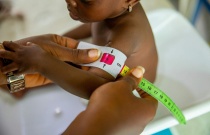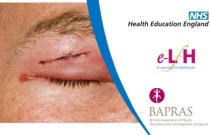Pediatric Healthcare - Lower Respiratory Tract Conditions
Dr. Juli Reynolds
Viral infections cause infections such as the common cold, bronchiolitis, tonsillitis, ear infections, influenza, and viral croup. This course covers the diagnoses and management of these infections in children.
Module 2 - Trauma Implants (Complimentary Taster Module)
Mr Rajesh Gopireddy, Mr Vilas Sadekar
This module provides an introductory overview of trauma implants used in orthopaedic surgery. It covers essential concepts and practical considerations, preparing participants for more advanced learning in fracture management and implantology.
Module 1 - General Concepts Of Orthopaedic Radiographs (Complimentary Taster Module)
Justin Mooteeram, David Hughes and Piyush V. Gavai
• Gain a foundational understanding of orthopaedic radiographs, essential for accurate diagnosis and treatment planning. • This complimentary taster module introduces key concepts and best practices in interpreting orthopaedic X-rays.
Specialised Paediatric Nutrition Care in a Global Context
Centre for Global Child Health at The Hospital for Sick Children (SickKids) in Toronto, Canada
This course helps health professionals learn how to address the unique nutritional needs of children and adolescents with disabilities, those living with HIV, and small and vulnerable infants. It emphasizes tailored, family-centered nutrition care, the impact of stigma on health, and practical strategies for assessment and suppo....
Nutrition Across the Life Course: Priorities in Children, Adolescents, and Women of Reproductive Age
Centre for Global Child Health at The Hospital for Sick Children (SickKids) in Toronto, Canada
This course provides health professionals with a thorough understanding of nutrition for infants, children, and adolescents, emphasising its impact on long-term health. It covers key influences on adolescent health and teaches the HEEADSSS psychosocial interview to explore these factors. The course also highlights nutrition for....
Maternal, Child, & Adolescent Nutrition: Assessment & Intervention
Centre for Global Child Health at The Hospital for Sick Children (SickKids) in Toronto, Canada
This course will provide health professionals with foundational knowledge and skills that will enhance their ability to provide comprehensive nutritional care to infants, children, adolescents, women of reproductive age, and their families. It covers nutritional requirements, malnutrition, nutritional assessments, and key interv....
Hospital-Acquired Malnutrition in Children and Adolescents
Centre for Global Child Health at The Hospital for Sick Children (SickKids) in Toronto, Canada
This course is for health professionals worldwide to learn about hospital-acquired malnutrition in children and adolescents, focusing on early recognition, assessment, and evidence-based interventions. Participants will learn to use screening tools, calculate nutritional needs, apply care strategies, and enhance interprofessiona....
COINN Webinar on World Prematurity Day Webinar
Julia Petty
This webinar will feature four voices from different parts of the world, each bringing a unique perspective on the impact of premature birth. Our speakers include a parent, a neonatal educator, a clinical neonatal nurse, and a researcher, offering a well-rounded view of the challenges and triumphs faced by families and healthcar....
Maternal Nutrition
Dora Kaki Agbodza, Dora Kaki Agbodza, Joseph Arkorful, Jodi Lis, Vivian Tackie, Fransisca Tsidih, John A. Anane, Bernice Kuwornu, Vivian Ofori-Dankwah, Cynthia Obbu, Miriam T.A. Bilson, Ekem Amonoo-Lartson, Patrick Abah
Welcome to the module, MATERNAL NUTRITION. This module is very targeted and is a supplement to the topic. This module does not contain everything you will need to know about this topic
Complementary Feeding
Mariama Margai and Magaret Mannah
Introductory child health and Introductory nutrition- To demonstrate the preparation of complementary foods
A collaborative approach to health promotion in early stage dementia
Catharine Jenkins and Ailsa McKay
1.00 Hours
Dementia affects all aspects of a person’s life, including memory, functioning, emotions and social relationships. Dementia care is a national priority because of an increasingly older population and the effect of the condition on individuals, families and communities. Early recognition, and appropriate care and treatment improv....
"Am I Dying?" "How Long Have I Got?" Handling Challenging Questions
Paula Lobo
0.50 Hours
This session explores the background to patients’ challenging questions and identifies the skills that can be used to respond to them. This session was reviewed by Paula Lobo and Christina Faull, last updated in March 2015.
"What Will It Be Like?" Talking About the Dying Process
Georgina Parker
0.50 Hours
This session explores the concerns that patients may have about dying, end of life events that professionals need to consider discussing with them, and the communication skills that can be used to facilitate these conversations. This session was reviewed by Richard Kitchen and last updated in May 2018.
Experience of clinical UDI applications with smart medical management system relying on GS1 standards
Dr. Shih-Chung Huang
The webinar audience is all stakeholders who wish to understand the challenges and the benefits of implementing traceability for medical devices.
9 on the Line - Patient Safety in the Operating Room
Megan Stewart, MD & Jessica Taylor MSN, RN
1.50 Hours
The operating room presents an environment for many different patient safety issues to arise. It is important for nurses to understand the importance of these issues, and to take action to improve patient safety in their healthcare organization. This course will address surgical site infections, perioperative hypothermia, retain....
"I'm Not Loveable Anymore" Discussing Intimacy in Advanced Illness
Mary Kirk
0.50 Hours
This session explores the concerns patients and their partners may have about intimacy and sex when approaching the end of life. It examines the challenges this raises for professionals and how most effectively to approach the topic. This session was reviewed by Bridget Taylor and Christina Faull, and last updated in February 20....
Index of orthodontic treatment need
Philip Benson, and Fiona Dyer
This session will introduce you to the Index of Orthodontic Treatment Need (IOTN). This is the occlusal index most frequently used in the UK to determine whether a patient would benefit from orthodontic treatment.
Repair of Skin Wounds of the Eyebrow and Eyelids
Nathalie Cain and Michael Kernohan
This session explores the types of wound that commonly occur around the eyebrow and eyelids and describes the steps that are necessary to explore and surgically repair such wounds.
A Multi-Pronged Approach to Improve Provider Satisfaction
Thomas Selva and Bryan Bliven
1.00 Hours
At University of Missouri Health Care, IT leadership relies on a multi-pronged approach to improve provider satisfaction with the EHR. A combination of weekly rounding, annual surveys, research, funded physicians, and clinician-led governance plays a part in the execution of action plans to accomplish everything from improving d....
Leadership theories and styles
Jenny Bergin BPharm, MBA, FACP, GAICD
Designed to introduce pharmacists to different leadership theories and styles. This activity was developed and accredited in Australia and was designed to address competencies described by the National Competencies Standards Framework for Pharmacists in Australia (2016). As such, some of the information may not be applica....
Statistical analysis2
Miss Chanapat Pateekhum
This course will teach you how to analyze statistical analysis
Avoiding plagiarism: guidance for nursing students
Bob Price
The pressures of study, diversity of source materials, past assumptions relating to good writing practice, ambiguous writing guidance on best practice and students' insecurity about their reasoning ability, can lead to plagiarism. With the use of source checking software, there is an increased chance that plagiarised work will b....
Guidance for novice authors on writing a journal article
Bob Price
1.00 Hours
This learning module focuses on writing for journal publication. The purpose of writing is explored, paying particular attention to the message to be conveyed and the readership to which that message is addressed.The process of drafting and revising an article for publication is outlined, after which attention is turned to the p....
Gang Membership Updated
U.S. Department of Health and Human Services
10.00 Hours
This CE course was developed using a publication by the Centers for Disease Control and Prevention and the National Institute of Justice. The course contains information critical to those working directly with youth, like teachers, police officers, community service providers and emergency department physicians. *This course....
























